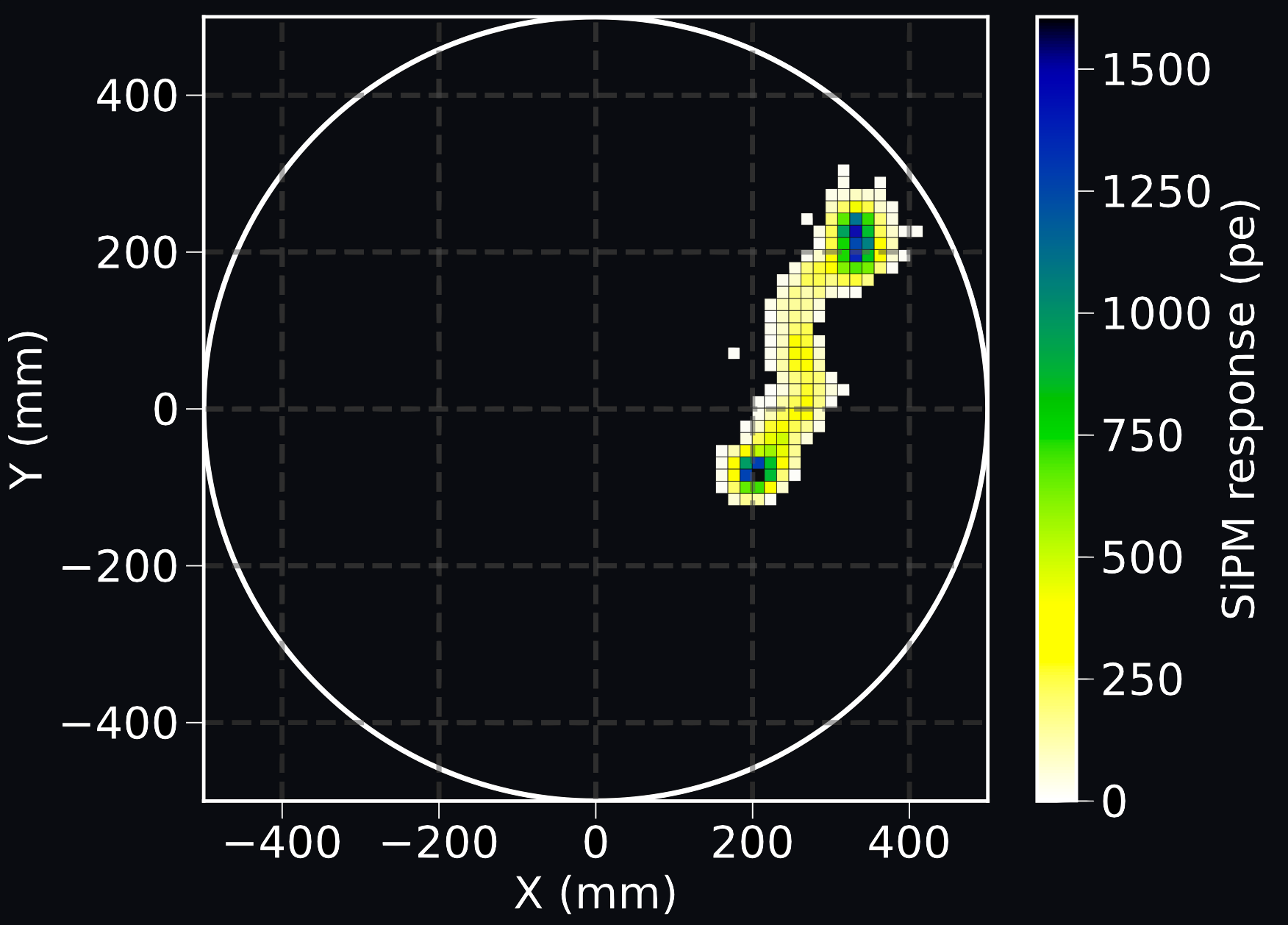The NEXT collaboration is pleased to announce the publication of a detailed article describing the design, construction, and commissioning of the NEXT-100 detector, now fully operational at the Laboratorio Subterráneo de Canfranc (LSC) since May 2024. This marks a major milestone in our ongoing program to search for neutrinoless double beta decay (0νββ) in 136Xe using high-pressure xenon gas time projection chambers with electroluminescent (EL) amplification.
NEXT-100 represents the third phase of the NEXT program, following the successful operation of the NEXT prototype detectors and NEXT-White. Capable of holding xenon gas at a pressure up to 13.5 bar, is designed to combine excellent energy resolution (targeting 1% FWHM at the Qββ value) with powerful background rejection via 3D event topology reconstruction.
The publication provides a comprehensive description of the detector, including details about the time projection chamber, sensor planes, gas system and DAQ and calibration. Preliminary results from the commissioning phase confirm the detector is stable at 4 bar and meets the design performance expectations. The system shows good energy resolution and spatial reconstruction capabilities, with all critical subsystems operating as intended. Background measurements and radiopurity assessments are ongoing, and the first physics-quality data are being collected. NEXT-100 establishes the technological foundation for scaling to a future ton-scale detector and contributes to the broader effort of uncovering the fundamental nature of neutrinos.
The NEXT-100 Detector is Commissioned and Taking Data

